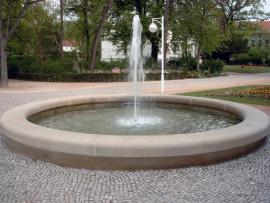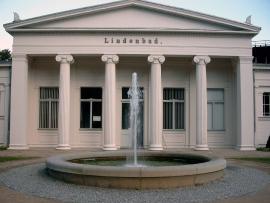Fountains
Fountains were indispensable to the water supply of cities and settlements in the time before the installation of water pipes. They were public places and meeting points for people, especially for the laundry workers.
The classic fountain with a fountain bucket was built above a ground water source. Even in ancient Rome, fountains were built throughout the entire municipal area and fed by aqueducts.
With the advent of individual water supply, the less public fountains were needed for water provision, the more they became symbols of the power and influence of the fountain builder. In many towns and villages, they were replaced by what were effectively artistic fountains and the classic supply or washing fountain disappeared.
The fountain structures from this time often consist of complex combinations of water fountains, cascades and pools. In the summer, the water cools its surroundings through evaporation and contributes to the improvement of the urban climate.


